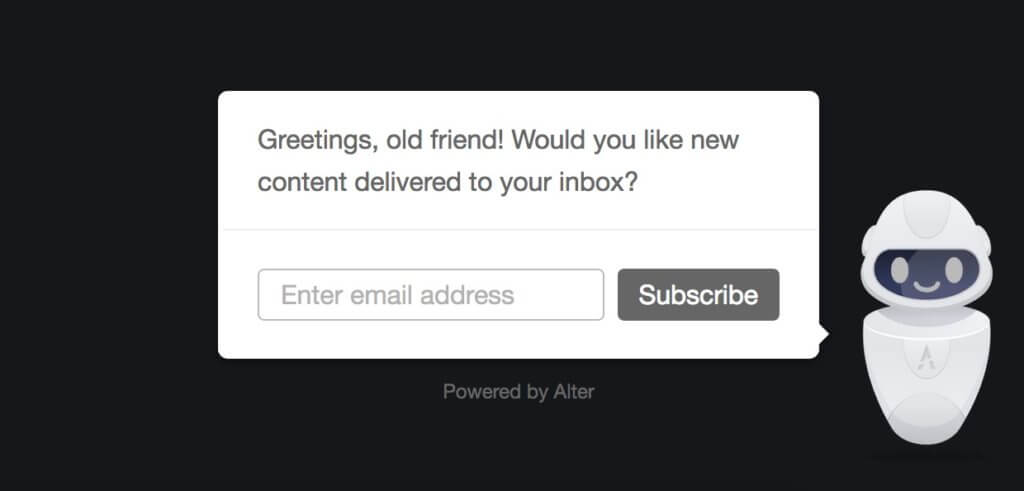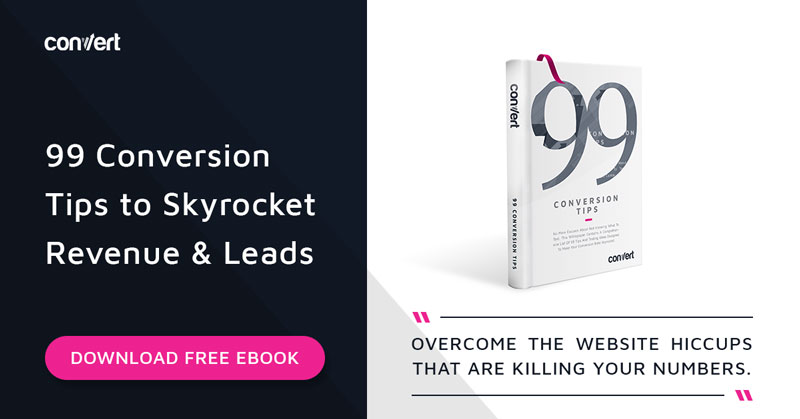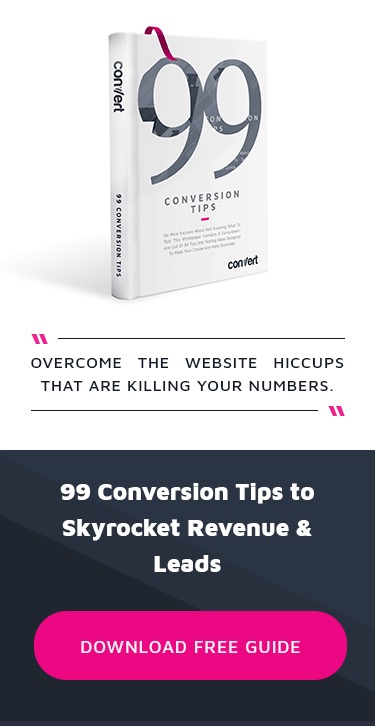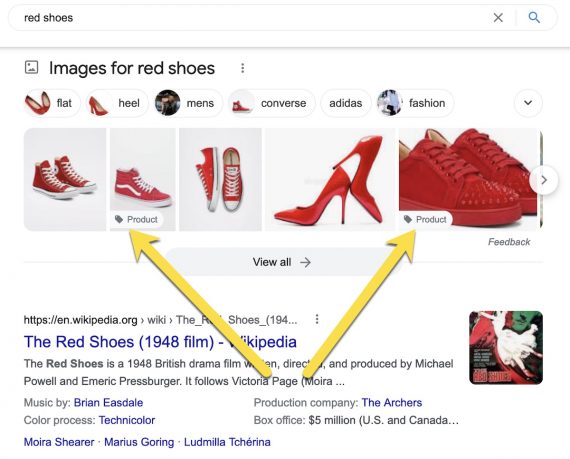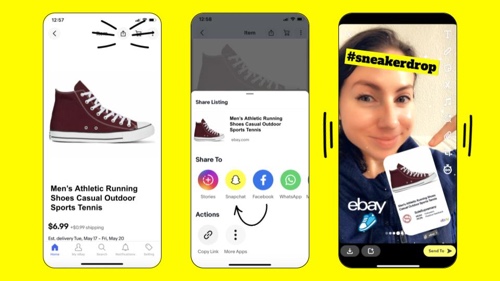Use Text Optimizer to find action-oriented terms around your target topic. These create a perfect actionable context for your lead-generating calls-to-action.
Creating niche content is not an easy task but creating performance-oriented (specifically lead-generating) content is even harder.
You can put together a new lead magnet for each new article you publish by using a content repackaging tactic.
1. Diversify Your Traffic Sources
Alter is an on-site marketing software that allows you to easily integrate a smart self-learning bot on your site. Once installed, the bot can be left to learn your audience and engage your site visitors. Alternatively, you can customize its settings and messages. I have found its auto-pilot settings quite satisfying.
It’s hard enough to write unique articles that aim at appealing your target audience. But what about creating content that prompts your target customer to want to subscribe and come back?
- Optimize for search engines. The necessary of all evils, this is still the fundamental steps to ensuring your content will get found. Luckily, I have already put together a pretty actionable SEO checklist which you can find here:
- Go to high-profile publishers (and possibly automate that). Services like Outbrain and Taboola bring your content to the highest quality publishers but putting links to your site in “Related” or “Further reading” sections below the high-traffic articles.
- Pay for social media spread. All major social media sites have advertising models that give more exposure to your content through sending more views to your shares: Facebook ads, Twitter ads, Linkedin ads, etc). Facebook is where I’d start with as it has proven to be the most effective so far.
- Use Viral Content Bee (Disclaimer: This is the site I founded). VCB is a great way to put your content in front of eager social media sharers for wider reach. In most cases, this is the easiest (and free!) method to get your content discovered
- Use Google Local Posts. If you are into local marketing, publicize your newly published content “My Business Posts“
- Schedule recurring tweets using tools like Drumup and Mavsocial. Catch more of your Twitter following online by scheduling recurring tweets promoting your new article.
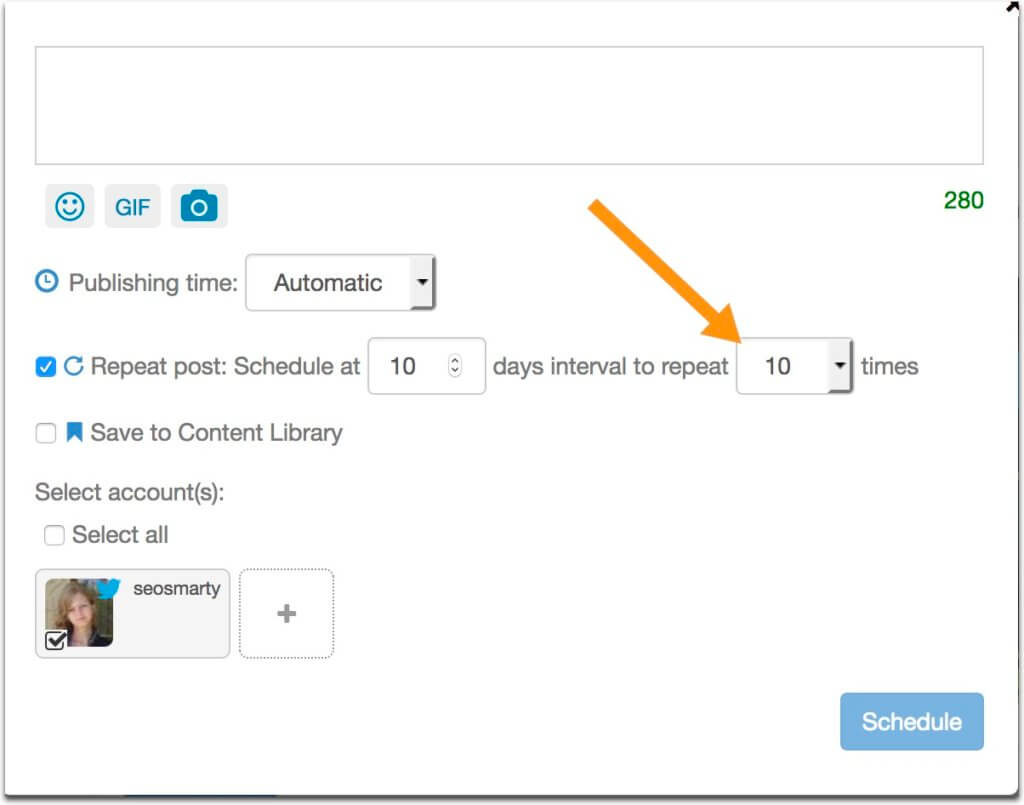
For example, HubSpot does a great job offering a unique, tightly-related lead magnet almost inside each of their article. For example, an article on crafting eye-catching bios offers a downloadable PDF of bio templates:
Create seasonal campaigns inside tools like Content Cal to alert your team of an upcoming trend. Whenever your team is reviewing an upcoming month, they will see a ribbon signalling of each trend and they will be able to time their on-site content and social media updates accordingly:
A lead magnet is the downloadable content asset that your readers will want enough to give you their email address. The best lead magnet is the one that solves the current problem, the one you are discussing in your article.
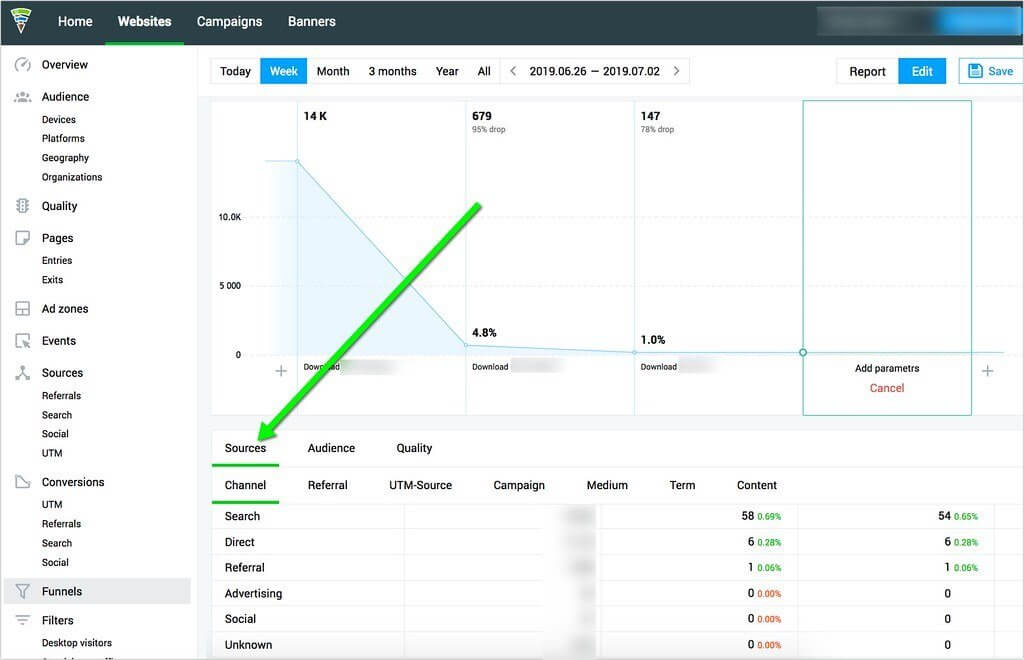
The more traffic generation channels you develop, the steadier stream of traffic you create. In case you lose one of them (or stop paying for ads), you’ll still some clicks (and hence conversions) coming.
2. Word Your in-Content CTAs Properly
If you want to focus on free tools only, you can put together free downloadable presentations using Google Slides and free eBooks using Google Docs. There’s also a plethora of free themes and plugins making lead generation through content upgrades easier.
What can we learn from this study?
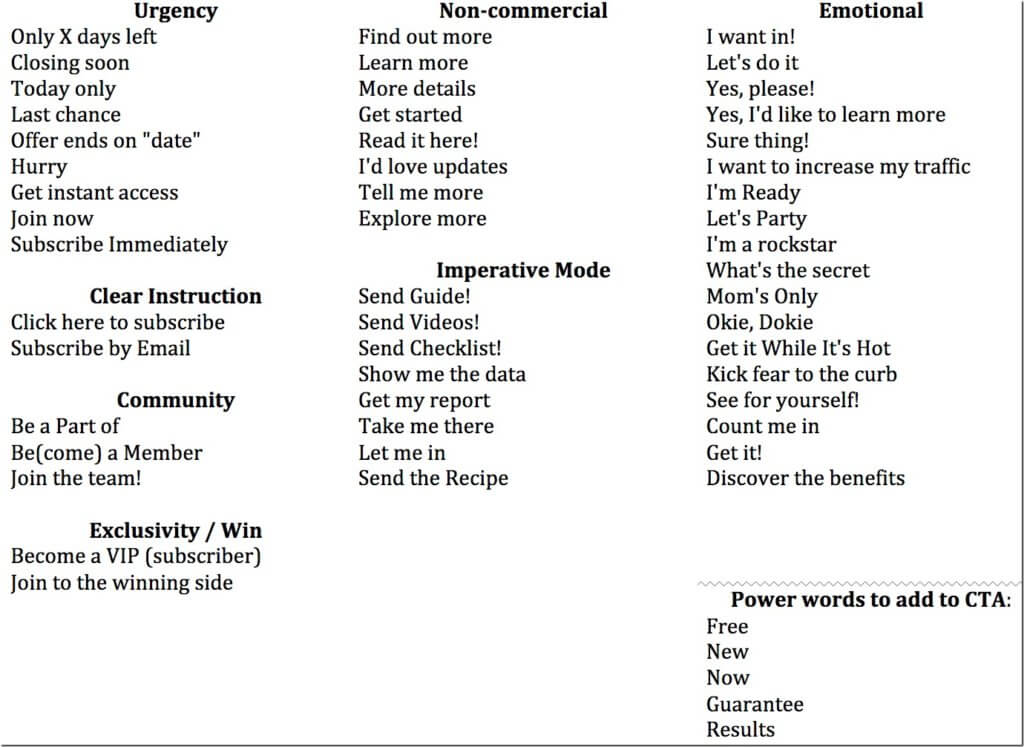
Alter connects to major email marketing platforms allowing you to use it to grow your email list. It has turned much more effective than optin forms for me, possibly because it looks different (so users may get curious enough to give their email address). Besides, it shows different messages based on user behavior, so it engages rather than annoys:
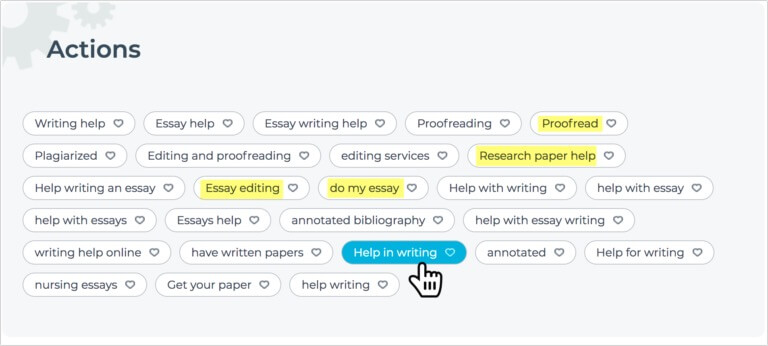
Obviously, there is no content-based lead generation without incoming traffic. You need clicks to convert clicks into subscribers.

3. Boost Your Marketing Based on Seasonality
Using seasonality is an effective content marketing tactic many businesses ignore. Timimg your content to a specific seasonal trend is a great way to generate more clicks and engagement.
Doing this is a lot easier than you might think. It just takes a little effort and innovation, and you are on your way. You can create downloadable cheatsheets and flowcharts using tools like Canva and you can put together video instructions using tools like Wave.Video. Neither of these tools requires any design skills and they both take seconds to put something nice together.
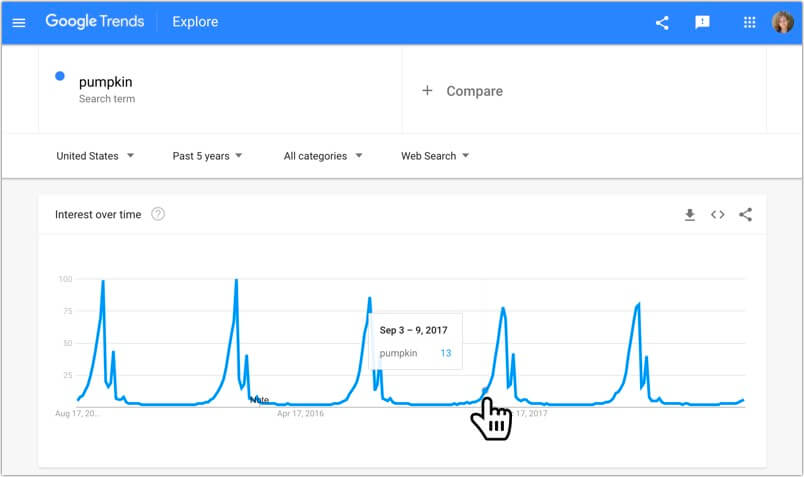
There is a trick to managing content that a lot of people don’t know: repackaging it. You can take those blog posts or articles and turn them into something new and exciting, converting the format into other forms of media for wider appeal. Here are 69 lead magnet formats from OptinMonster to get your creative juices flowing.
There’s no single sure-fire way to create content that will get readers share their email addresses with you. Here are a few tactics that will get you at least started:
- Create a list of all holidays, big and small, and events that can be relevant to your audience.
- Create a list of all the seasonal trends you are aware of (e.g. back-to-school, skiing, swimming, flu season, etc.)
What really matters at this point though is to identify the best-working traffic generating strategies to be able to make each of your published articles more successful, one piece at a time. Therefore I recommend installing Finteza long before you start experimenting with various traffic building tactics. Finteza is the on-site analytics suite with a huge focus on traffic effectiveness.
The goal is to identify a seasonal trend for the whole year ahead and have at least one specified for each week. Your trends don’t have to be directly connected to your businesses area. Even a hot dog day can be a trend that relates to business advice, for example. You can use a simple Google timeline to plan things out at this point.
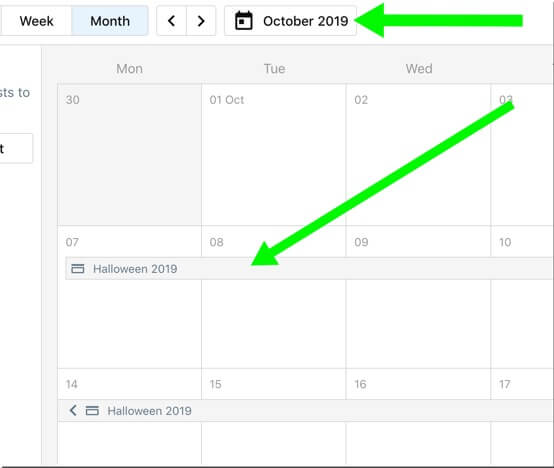
The idea that an artificial-intelligence-based recommendation bot can follow your target customer around your site providing personalized suggestions whenever they need one is really eye-opening.
Simply creating good content is not enough. It’s the combination of all sorts of promotion that creates the first wave of exposure (that ideally will fuel itself at some point and will start driving continuous exposure on its own). Making your content findable is essential but there’s so much into generating a steady stream of traffic. Here are a few tactics that are scalable to at least some extent:
4. Create Unique Lead Magnets that Fit Your Context
One optin form per article is not enough for getting those subscribers. Like with traffic sources, you need to diversify and experiment.
That timing can sky-rocket your marketing, including content marketing

A Nielsen study found that 37% of U.S. consumers bought a pumpkin-flavored product between the mid-September and Christmas.
For even more inspiration, check out Text Optimizer, a semantic analysis tool that, aside from other useful types of analyses, generates a separate block of “Action words”. These are perfect to be used around your CTA as well as in subheads leading to it:
If you are working on multiple traffic sources, set up Finteza to identify the best-working ones.
Invite to join you, get readers curious, experiment with in-content call-to-action (CTA) wording and placement. This article lists lots of examples of possible ways you can word your in-article CTA:
5. Embrace Artificial Intelligence
You don’t have to create new content for each seasonal campaign. Leverage your existing content whenever it fits a trend. Using seasonality to promote your old and new content will generate new engagement and consequently leads.
A Nielsen study found that 37% of U.S. consumers bought a pumpkin-flavored product between the mid-September and Christmas.
It measures traffic quality by source, monitors multiple events per page, and lets you analyze your conversions and build sales funnels.
